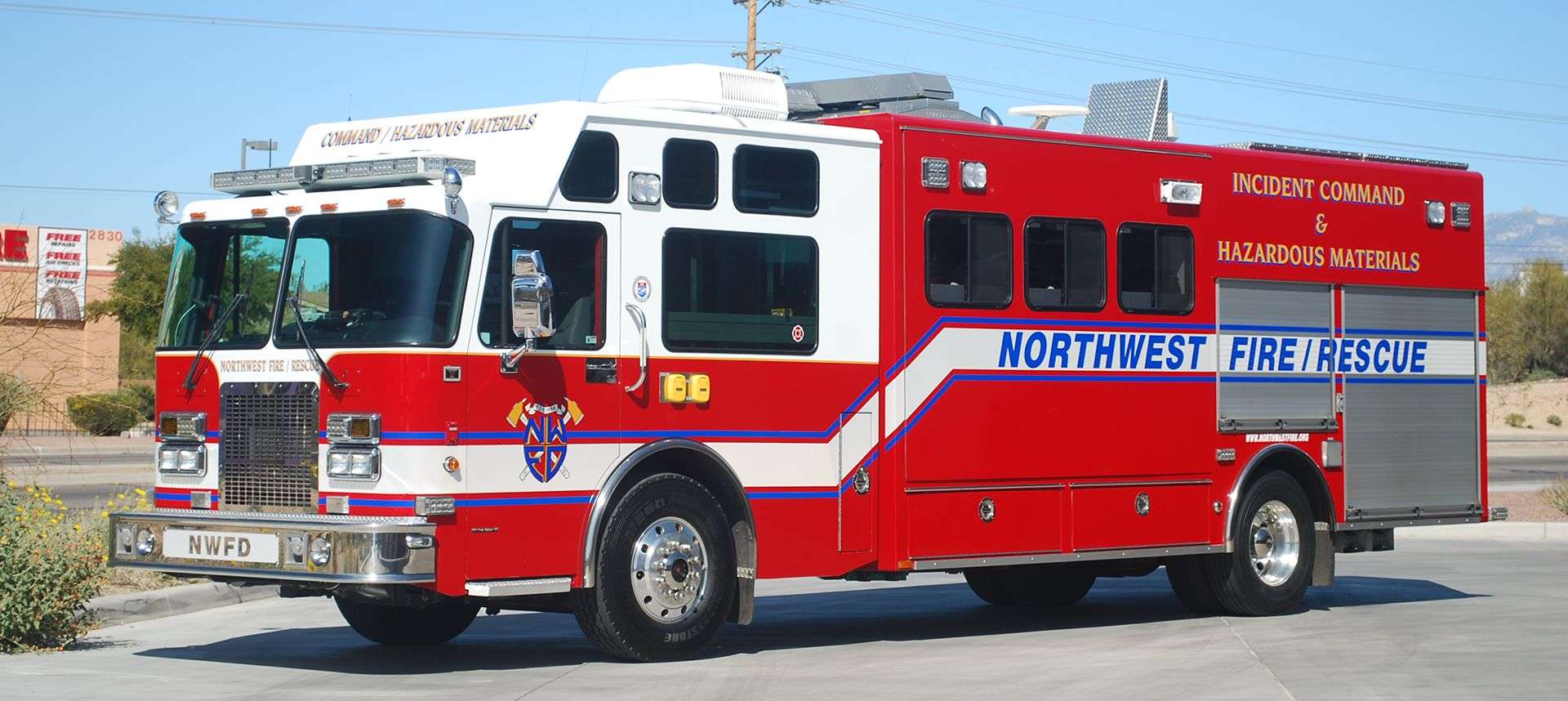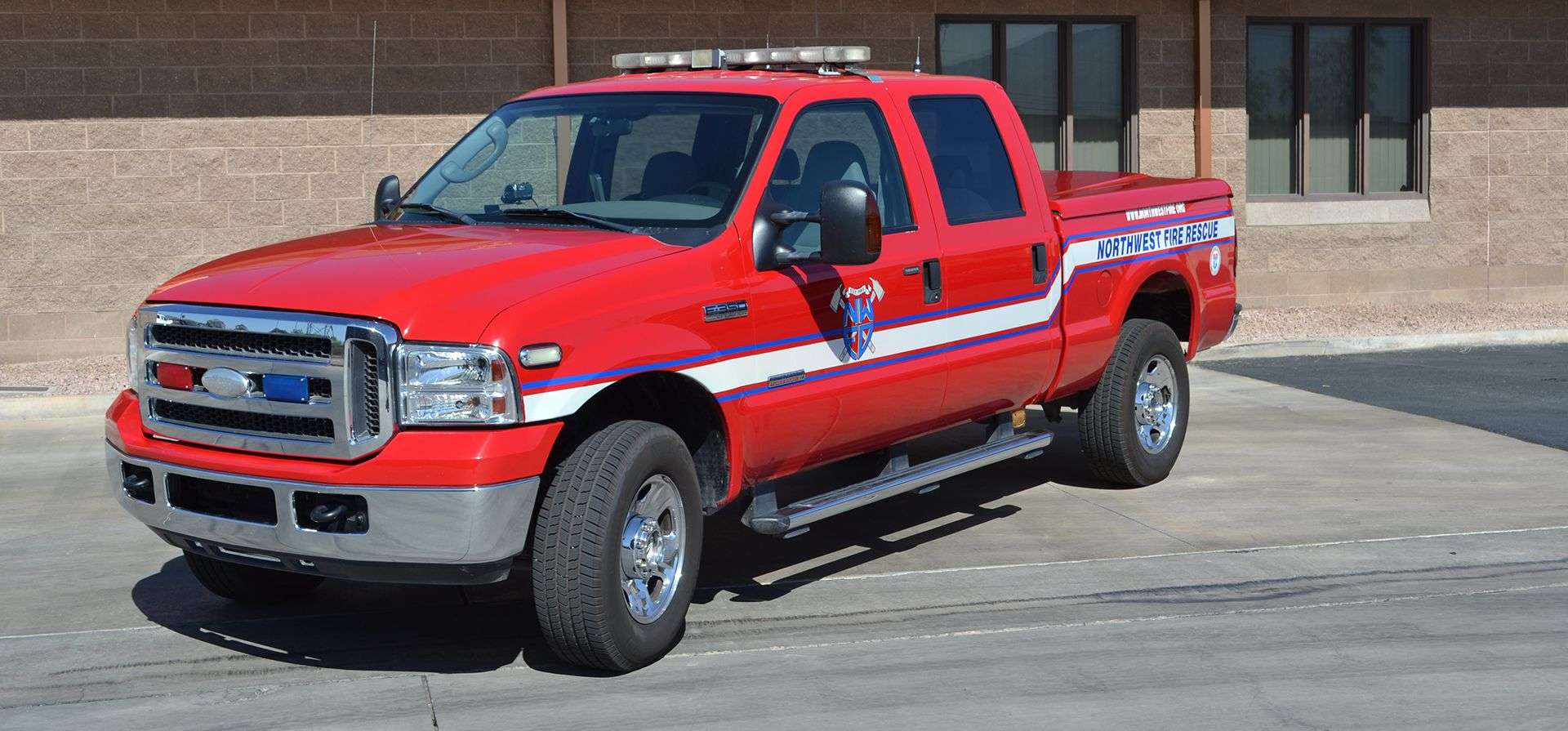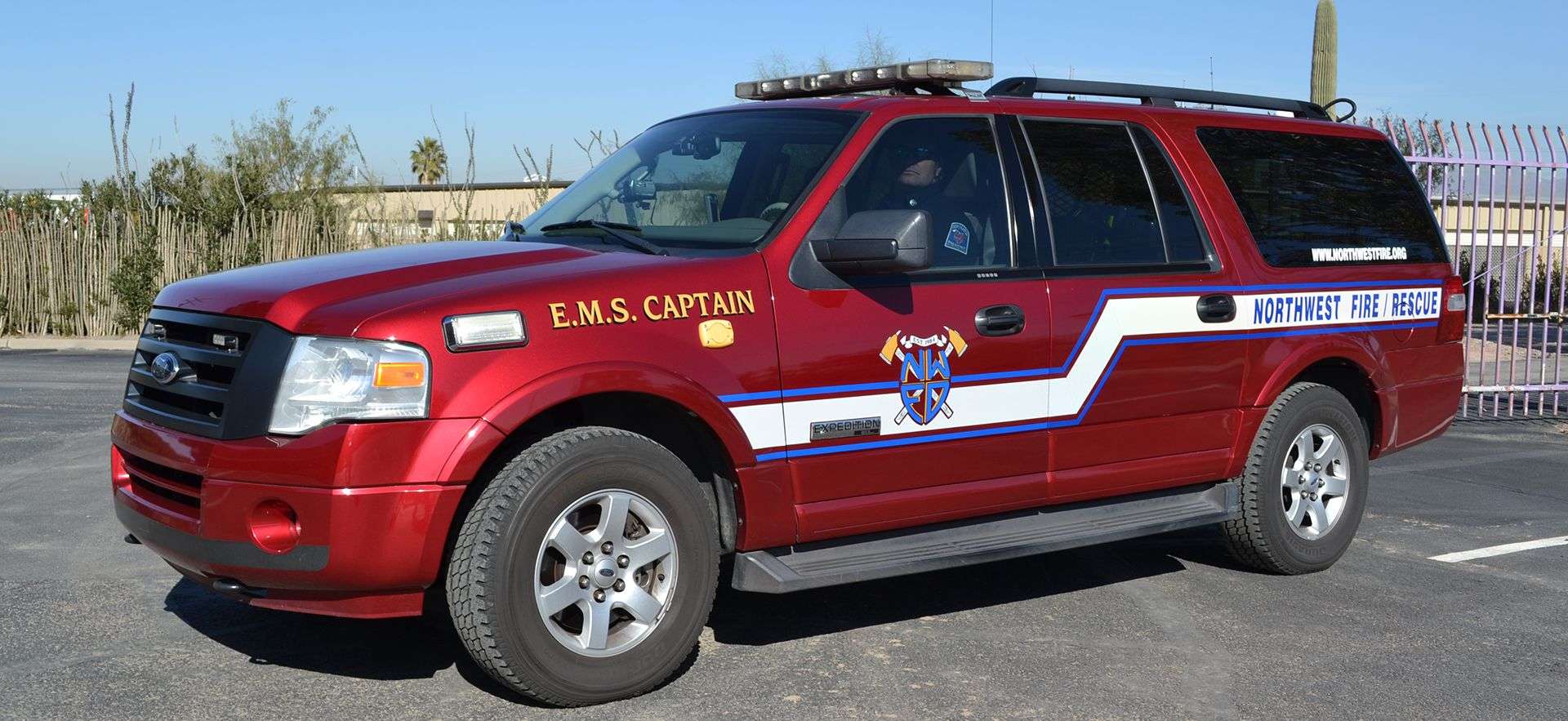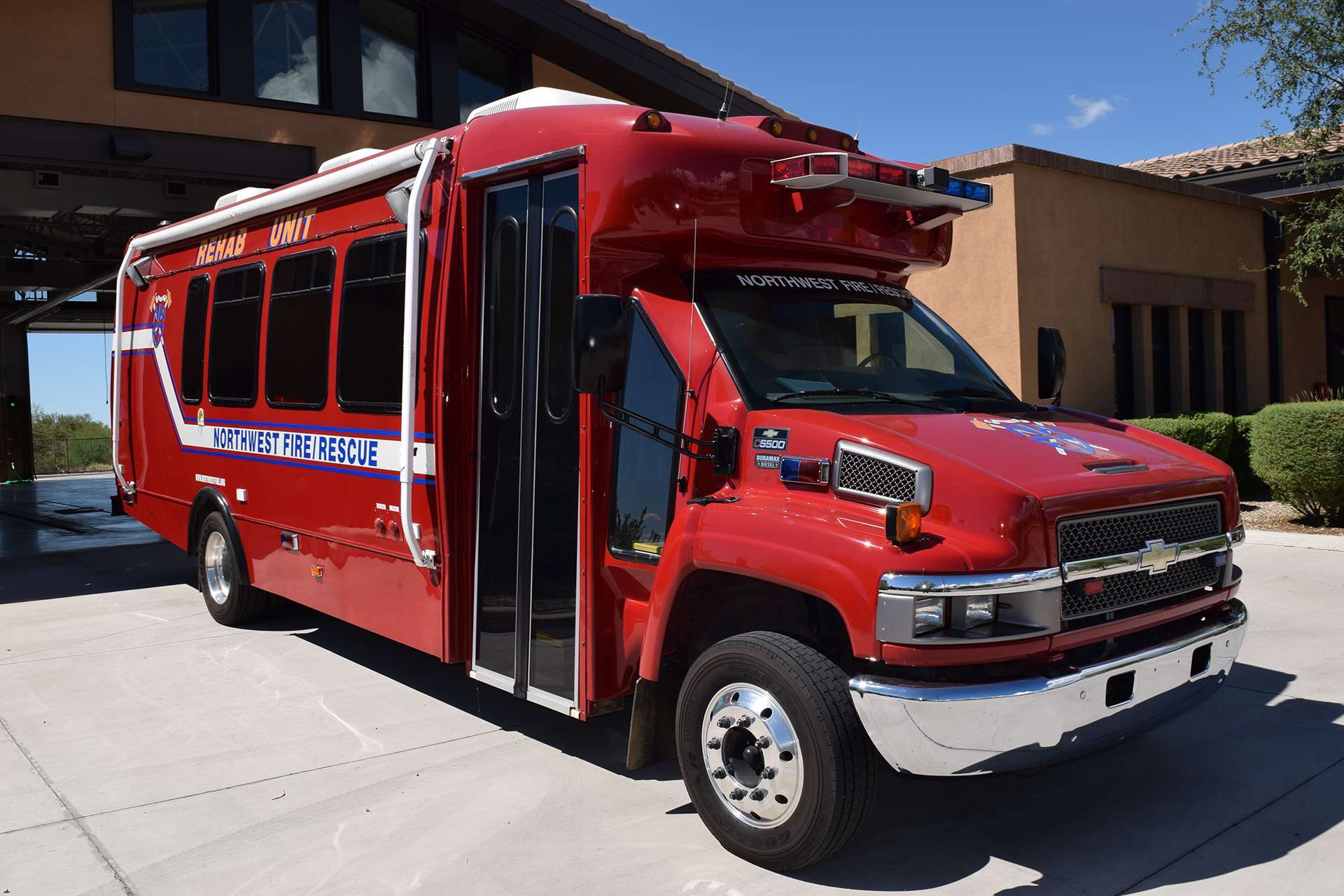Response Vehicles
Learn MoreThere is a diverse landscape and an unique mix of neighborhoods and businesses across the 140 square miles of the Northwest Fire District. From a regional airport to rural homes placed on mountain sides; from bustling malls and resorts to expansive bridges that traverse arroyos with rushing water, we encounter a variety of scenarios in protecting the District. Below, you’ll see the response vehicles we use to help us get the job done.
Primary Vehicles
Support Vehicles

Eleven full-time Engine Companies and one Adaptive Response Engine Company (staffed during times of typically higher call volume) are spread throughout the district to provide quick response to all fire and medical emergencies. Each Engine has a 500 gallon onboard water tank and 1250 gallon per minute pump. Each Engine is also equipped with extrication equipment for vehicle accidents, power saws for forcible entry and ventilation, and emergency medical equipment. Some of the newer Engines employ compressed air foam systems to minimize damage to buildings. They are staffed with a Captain, Engineer, Firefighter Paramedic, and Firefighter EMT.

Two 100 foot ladder companies are located in the heart of the district for response to all structure fires. These trucks are critical to fire suppression and rescue efforts at the many multi-story apartment and motel structures in the district as well as the large commercial occupancies. They are staffed with a Captain, Engineer, Firefighter Paramedic, and Firefighter EMT..

Five rescue companies are strategically located in the busiest parts of the district to handle the primary emergency medical calls. They are also available to assist on all structure fires and major vehicle accidents. They are staffed with a Firefighter EMT and a Firefighter Paramedic.

This truck responds to all calls involving the release of a hazardous material. It has equipment for collecting and identifying unknown substances, air monitors for detecting chemical and radiological materials, plugging and patching equipment for semi-trucks and rail cars, and weather systems for predicting the spread of dangerous vapors. Additional equipment includes specialized protective suits and decontamination materials for responders. A command center is located inside the truck and has multiple radios, laptops, research guides and a long range video camera to assist with scene control.

Two Shift Battalion Chiefs are on duty to take command of major incidents occurring in the District. Their vehicles are equipped with state-of-the-art technology that enables BCs to safely manage large incidents.

One Shift Captain is on duty to handle emergency medical operations within the district. They are responsible for overseeing all Paramedics, responding to critical medical calls, and act as the safety officer on all fires.

Three water tenders are available for response to fire calls where hydrants are not readily accessible. Each tender carries 2700 gallons of water and portable water tanks for tender shuttle operations.


One rehab truck is available to combat the elements on extended operations. This unit can accommodate over two dozen personnel. It has two large air conditioners, onboard generator, restroom, drinks and snacks, as well as a misting system and canopy. It is staffed with one Firefighter.

This vehicle responds to all calls requiring advanced rescue operations. Equipment on board is used for swift water rescues, trench collapse, high angle rescues, confined space rescues, and industrial accidents.

This truck is capable of extinguishing fires involving small planes or helicopters. It has a remote control nozzle attached to front of the truck that can discharge the 150 gallons of AFFF foam and 500 pounds of Dry Chem that are carried onboard.

